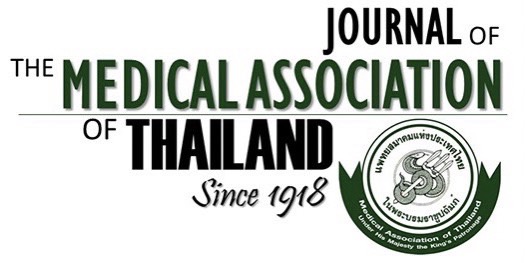Cancer Associated Acute Pulmonary Embolism: A Six-years’ Experience from a Single Center of Thailand
Pornphan Intarasattakul, MD¹, Taechasen Dangploy, MD¹, Warapon Leeprakobboon, MD¹, Sahachat Aueyingsak, PhD², Burabha Pussadhamma, MD¹
Affiliation : ¹Department of Medicine, Faculty of Medicine, Khon Kaen University, Khon Kaen, Thailand, ²Department of Physical Therapy, College of Health Sciences, Christian University of Thailand, Nakhon Pathom, Thailand
Background: Cancer is the most prevalent triggering condition for acute pulmonary embolism (PE). Characteristics and treatment outcomes could be varied among practices.
Objective: To study the characteristics, treatments, and outcomes of patients with cancer-associated acute PE.
Materials and Methods: All patients admitted with acute PE from January 2011 to December 2016 were retrospectively recruited into Khon Kaen University Pulmonary Embolism (KKU PE) registry, and patients with cancer-associated acute PE were subsequently enrolled in the present analysis. Clinical characteristics, biomarkers, imaging, treatments, and in-hospital courses were reviewed. Survival was followed until December 31st, 2018.
Results: 188 out of 347 patients (54.2%) enrolled in KKU PE registry were classified as cancer associated acute PE. Among those patients, median age (interquartile range) was 61 (18 to 87) years, and 105 patients (55.9%) were female. PE was classified as low risk, sub-massive, and massive in 49 (26.1%), 125 (66.5%), and 14 (7.4%) patients, respectively. Cholangiocarcinoma (CCA), gynecologic malignancies, and lung cancer were most of the associated cancers (49 (26.1%), 35 (18.4%), and 26 (13.8%) patients, respectively). Acute PE was diagnosed in 75 patients during their hospital admission. Systemic thrombolysis was given in 3 patients (21.4%) with massive PE and in 6 patients (3.4%) with non-massive PE, (p=0.001). Initial parenteral anticoagulants were given in 162 patients (86.2%), and long-term oral anticoagulants were given in 67 patients (35.6%). Five patients (2.7%) underwent transcatheter treatment and no patient underwent surgical thromboembolectomy. Major bleeding and intracranial bleeding occurred in 12 patients (6.5%) and 1 patient (0.5%), respectively. The mean survival (95% confidence interval) of overall patients was 11.8 (8.3 to 15.3) months.
Conclusion: Cancer is the most common risk factor for acute PE and CCA is the most prevalent associated cancer. Treatment, either medication or intervention, seemed to be underutilized, and prognosis of cancer associated acute PE was grave.
Keywords : Pulmonary embolism; Venous thromboembolism; Cancer; Malignancy



